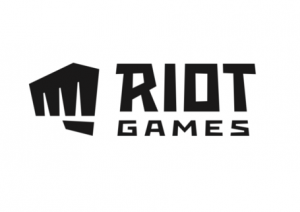Riot Games’ First International VALORANT Tournament Final Grabs More Than 1 Million Concurrent Viewers, 800K Average Minute Audience
Story Highlights
Riot Games have announced he viewership numbers for its first international VALORANT tournament, Masters Reykjavik, which concluded on Sunday, May 31. The much-anticipated final match featured an international face off between Team Sentinels from North America and FNATIC from Europe. Sentinels emerged victorious, winning the finals in three games to earn the Masters trophy. As a result of their strong performance at Reykjavik and earlier in the year, Sentinels became the first team to qualify for VALORANT Champions, the end of year World Final.
 “From the beginning, we believed VALORANT had the potential to be one of the largest esports in the world, and the best in its genre. Masters Reykjavik showcased that potential, delivering nail-biting action to millions of fans – stoking regional rivalries while introducing the next generation of superstars,” says Whalen Rozelle, Sr. Director of Esports at Riot Games. “We’ve been eagerly awaiting our first international competition, and the fan reception across the globe to Masters reaffirms our commitment to investing in the future of this esport.”
“From the beginning, we believed VALORANT had the potential to be one of the largest esports in the world, and the best in its genre. Masters Reykjavik showcased that potential, delivering nail-biting action to millions of fans – stoking regional rivalries while introducing the next generation of superstars,” says Whalen Rozelle, Sr. Director of Esports at Riot Games. “We’ve been eagerly awaiting our first international competition, and the fan reception across the globe to Masters reaffirms our commitment to investing in the future of this esport.”
The final match between Sentinels and Fnatic garnered more than one million concurrent viewers, and an average minute audience, or AMA, of over eight hundred thousand, according to Stream Hatchet who analyzed global viewership data. This viewership sets a new record for VALORANT esports and is an indicator of the growing potential of the sport. The Masters Reykjavik broadcast was available globally on multiple digital platforms and was distributed in more than 15 different languages. Throughout the event, streamers from around the world also hosted “Watch Parties,” providing an alternative way for fans to experience the broadcast.
“The sports broadcasting landscape and how fans consume content are evolving considerably. A one-size fits all approach is no longer the path to reaching the largest possible audience,” says Kasra Jafroodi, Global Strategy Lead for VALORANT Esports. “We’re going to continue to lean into Watch Parties and partnerships with co-streamers to create unique and resonant experiences for our fans.”
During the event, Riot Games announced new initiatives to support the expansion of VALORANT esports, including “The Conquerors Championship,” a new competitive circuit in South Asia. The tournament is aimed at providing the much-needed gateway to international representation for the players and teams in India, Pakistan, Afghanistan, Sri Lanka, Maldives, Bangladesh, Nepal and Bhutan.
Following Masters Reykjavik, thousands of teams will now turn their attention to qualifying for Masters Berlin through 7 regional Challengers events, from which just 16 teams (up from 10 at Masters Reykjavik) will ultimately qualify into the event. Similar to Masters Reykjavik, Masters Berlin will take place on offline game servers, creating a virtually lag free experience. Competition will take place from September 9 – 19 at Verti Music Hall – host of the 2019 League of Legends World Championship Group Stage – as Riot continues to bring best-in-class esports competition to Germany’s capital.
The tournament will mark the final opportunity for teams to earn points that will count towards qualification for VALORANT Champions, the year-end event where one team will be crowned the 2021 VALORANT World Champion. All matches from Masters Berlin will be broadcast live globally on digital platforms including Twitch.tv and Youtube.
Concurrently, VALORANT today announced that an average of more than 14 million PC players from around the world log on each month to play. Over the game’s first year, VALORANT players competed in over half a billion games of the team-based shooter. With enthusiasm for VALORANT only continuing to grow, Riot now is preparing to expand the franchise – starting with VALORANT Mobile – in order to bring VALORANT to more players around the world.
